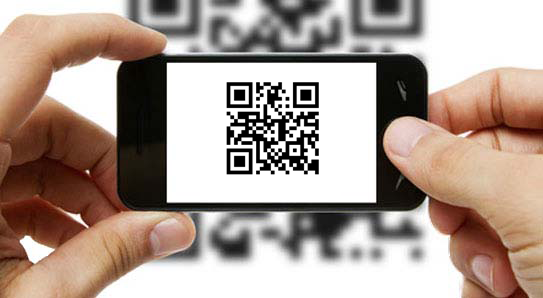
The QR code is a type of two-dimensional bar code (or datamatrix matrix code) consisting of black modules arranged in a square with a white background. The arrangement of these points defines the information contained in the code.
QR (abbreviation for Quick Response) means that the content of the code can be decoded quickly after being read by a barcode reader, a mobile phone, a smartphone or a webcam. Its advantage is to be able to store more information than a bar code, and especially data directly recognized by applications, allowing to easily trigger actions such as:
- navigate to a website, visit a website or put the address of a site in bookmark
- watch an online video or multimedia content
- trigger a call to a phone number or send an SMS
- To send an email
- make a direct payment via your cellular phone (mainly Europe and Asia)
- add a virtual business card (vCard, MeCard) in contacts, an appointment or an event (iCalendar) in the electronic calendar
- show a geographic point on Google Maps or Bing Maps
- post a text or write a free text (its largest version allows to include a text of about 500 words)
- etc.
Published in Japan in 1999 in a free data format, the QR code is subject to an ISO 18004 standardization.
QR codes can contain web addresses, text, phone numbers, SMS or other types of data such as vCard format (allows quick addition of a contact), readable by smartphones and mobile phones equipped with a reading application (reader of QR Code or QR reader in English).
The advantage of the QR Code is its ease and speed of use and creation. To read a QR Code, simply launch the application and read the code in the mobile.
Growithis supports you in setting up an information system managed by QR code technology. This technology allows you to benefit from:
- easy reading of information and its decoding
- an automation of the reading and the recording of the information allowing a gain in considerable time
